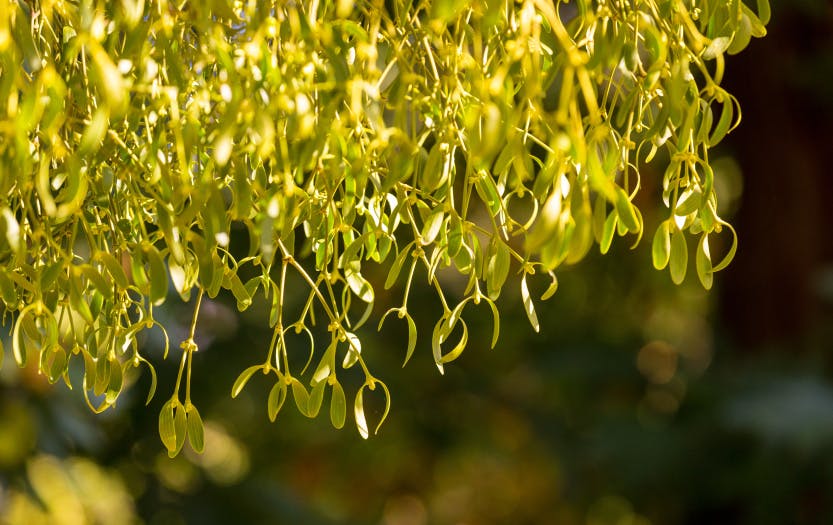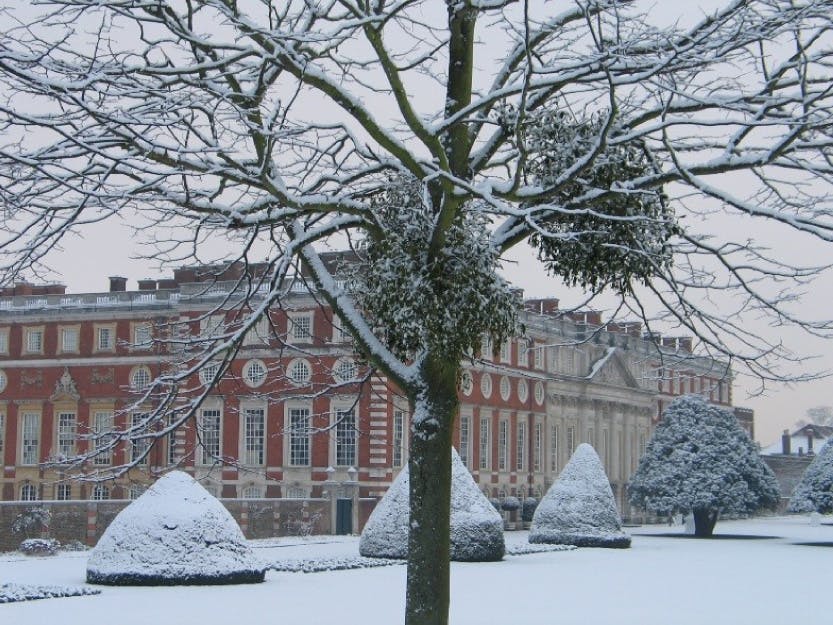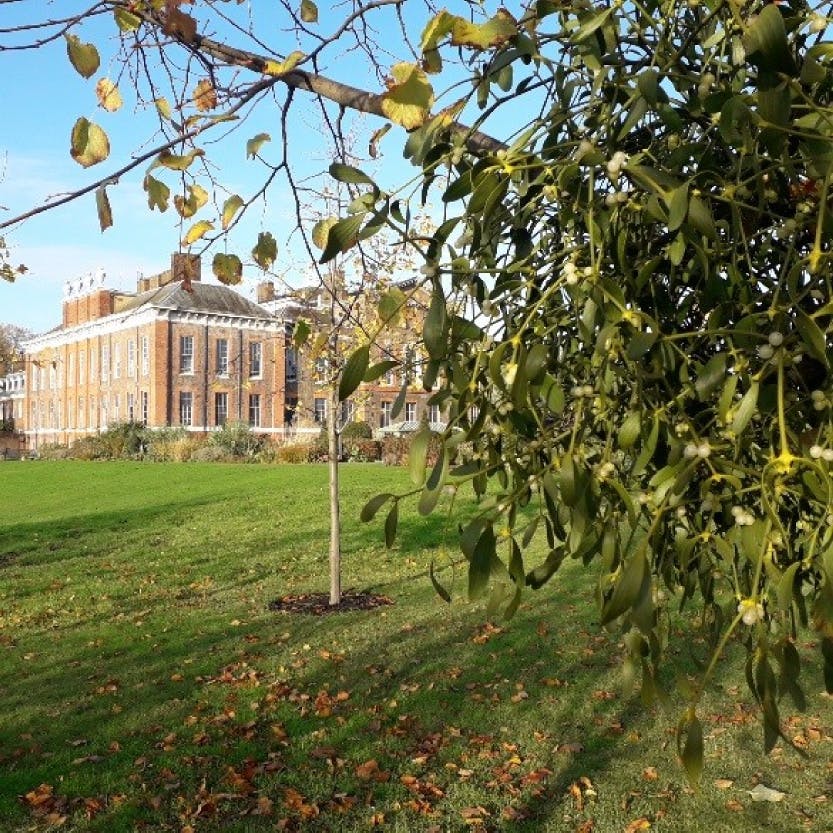Mistletoe in the Hampton Court Palace Gardens
Date: 20 December 2019
Author:
Graham Dillamore
One of the most popular questions posed to our gardeners during winter concerns strange lumps of weed growing in trees in the East Front garden. These random and odd-looking growths are in fact clumps of mistletoe.
To give it its correct botanical name, it's called Viscum album, which is our very own native species found across the British Isles. But beware this festive flora: it is actually a parasitic plant that grows on the flesh of trees. If you're not careful, this can lead to the tree's demise if the mistletoe is allowed to swamp the tree and strangle it, starving it of nutrients and water.
At Hampton Court Palace, we are particularly blessed with mistletoe and it quickly populates old and young trees thanks to two key elements. It is a lovely story of Mother Nature working in partnership with varied species.
First of all, our lime trees provide a perfect host due to the ridges and scars in the bark which enables the seeds to germinate, get rooted, and grip into the flesh of the tree. Thanks to the formal garden designers of the 17th century, there are many limes to be found in the gardens as they were used to form avenues in Royal Palaces. You can see it also in other trees such as oak and apple but limes seem the best.
Secondly is the mistle thrush. It has not been called that by accident; this bird that is popular in parks and gardens has a particular liking for those white mistletoe berries. However, the problem with the berries is that they are very sticky and the poor old thrush ends up having to wipe his beak on tree branches - lime tree branches in fact! Moreover, that is how the seeds are distributed. You often find once a clump of mistletoe is established on one tree it does not take long for it to spread throughout that tree. The thrush may also pass the seeds onto the tree via its poop, which is also very effective. Isn't nature wonderful?
Anglo-Saxons, Druids, Romans and many other groups who have occupied our shores seem to have placed some significance in this plant. From using it as a balm to cure ulcers and poisons, to hanging it above doors to deter evil spirits. It has also long had connotations with romance - used in love potions and administered as a fertility restorative. Kissing under mistletoe is a tradition that lasts until today, and seems to have several explanations - a common one being that it originated from Norse mythology.
The story goes that the Norse goddess of love and beauty Frigga had a son, the god Balder. He was the best-loved of all the gods, but he was prophesied to die. Frigga loved her son so much that she wanted to make sure no harm would come to him. So she went through the world, securing promises from everything that sprang from the four elements - fire, water, air, and earth, including the trees and plants. She secured promises that they would not harm her beloved Balder. However, the evil spirit Loki heard about the promise and found that mistletoe was not included. He made an arrow from its wood and to make the prank nastier, he took the arrow to Hoder, Balder's brother, who was blind. Guiding Holder's hand, Loki directed the arrow at Balder's heart, and he fell dead. Frigga's tears became the mistletoe's white berries.
However, do not fear there is a happy ending: Balder was restored to life, and Frigga was so grateful that she reversed the reputation of the offending plant - making it a symbol of love and promising to bestow a kiss upon anyone who passes under it.
Merry Christmas from the Gardens Team!
Warning! Please take note and advice from our Gardens Team and do not eat mistletoe, make love potions from it, or try to remove it from a tree. Leave that to us!
Graham Dillamore
Gardens Operations Manager
More from our blog

Creating your own wildflower garden
27 April 2020
You don't need large expanses of land to make your own wildflower meadow providing cover and food for wildlife. Following the success of our wildflowers at Kensington Palace, this year we planted a new wildflower meadow at Hampton Court. You too can do the same with any old patch of lawn in an open, sunny position.

Royal Trees at Hillsborough Castle and Gardens
31 May 2023
Claire Woods, Gardens Manager at Hillsborough Castle and Gardens, reflects on some of the trees planted by members of the Royal Family, which are still available to view in the castle grounds today, and the newest addition for 2023.

400 Years of William Shakespeare at Hampton Court
06 November 2023
On 8 November 1623, John Heminges and Henry Condell, completed the collected works of William Shakespeare – now known as the ‘First Folio’. Here, we explore how this period was brought to life at Hampton Court Palace this summer, using research into the playwright’s palace connections.



